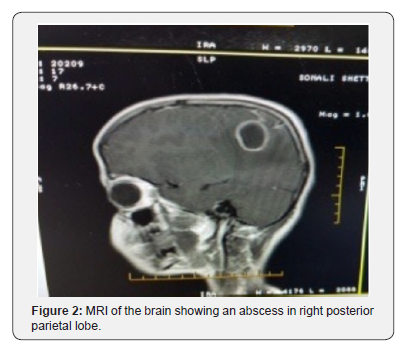Multipurpose Catheter Modification for Entering Pulmonary Artery in a Complex Congenital Heart Disease
Vivek Kumar1*, Jaimin Dave2 and Naveen Aggarwal3
1 Pediatric Cardiologist, Army Hospital R & R, India
2 Senior Resident Cardiology, Army Hospital R & R, India
3 Consultant and HOD Cardiology, Army Hospital R & R, India
Submission: March 22, 2018; Published: May 24, 2018
*Corresponding author: Vivek Kumar, Pediatric Cardiologist, Army Hospital R & R, Delhi Cantt-110010, India -208004, Tel: 91-7042743322; Email: vk3532@gmail.com
How to cite this article: Vivek Kumar, Jaimin Dave, Naveen Aggarwal. Multipurpose Catheter Modification for Entering Pulmonary Artery in a Complex Congenital Heart Disease. J Cardiol & Cardiovasc Ther. 2018; 10(4): 555794. DOI: 10.19080/JOCCT.2018.10.555794
Abstract
Pulmonary artery (PA) pressure measurement during diagnostic catheterization in univentricular heart, is the most important parameter for single ventricle palliation. Many a times it is extremely difficult to enter the pulmonary artery because of the complex anatomy. Absence of atrial septal defect (ASD) precludes taking of reverse pulmonary venous wedge pressure as a surrogate marker for PA pressure. We encountered a similar problem; however it was circumvented by the modification of the multipurpose catheter.
Keywords: Multipurpose catheter; Pulmonary artery; Single ventricle
Case Report
A 9 year old male child was palliated with pulmonary artery (PA) band done at 4month of age for double inlet left ventricle (DILV), outlet chamber on left with L-malposed great arteries and severe PAH. He had class II symptoms. On examination his weight was 25kg and height was 132cm. He was saturating 88% in room air and the blood pressure was 100/50mmHg. Cardiovascular examination revealed normal S1, single and soft S2 with ejection systolic murmur grade 4/6. His echo showed DILV, outlet chamber anteriorly on the left giving rise to aorta and PA band in situ with gradient across PA band 70mmHg. After discussion with the parents it was decided to do cardiac catheterisation to assess PA pressure and suitability for single ventricle palliation.
After taking consent patient was taken up for the procedure. Right femoral artery and venous access was taken with 5Fr sheath. As there was no ASD invasive pulmonary artery pressure had to be taken. Pulmonary artery was entered with 035” exchange length hydrophilic wire (terumo) over 5Fr end hole long curve multipurpose catheter (MPA), however neither Judkins right or multipurpose catheter could track over the wire taking two bends. We did not have slip catheters. We then decided to cut the 5Fr multipurpose catheter at the junction of primary and secondary curve and the secondary curve was also straightened (Figure 1). This catheter was then slipped over the exchange length terumo wire with slight traction and counter traction (Figure 2 & 3). We easily entered PAs and pressure was taken which was 24mmHg (mean). It was decided after the procedure that the patient was not fit for single ventricle palliation so he was discharged with advise to be on medical follow up.



Conclusion
Complex single ventricle anatomy has varied orientation of pulmonary artery. The pulmonary artery anatomy and pressure are the most important parameters for single ventricle palliation. Commonly available catheters may not track over wire due to multiple bends, as what happened in our case. The above modification of end hole multipurpose catheter could reach the pulmonary artery. It can be useful in cath labs to enter pulmonary artery in complex anatomy.






























